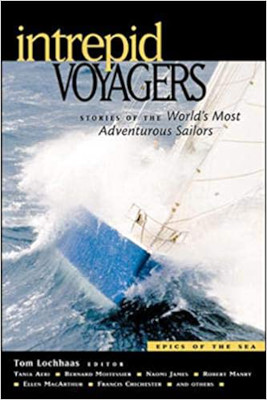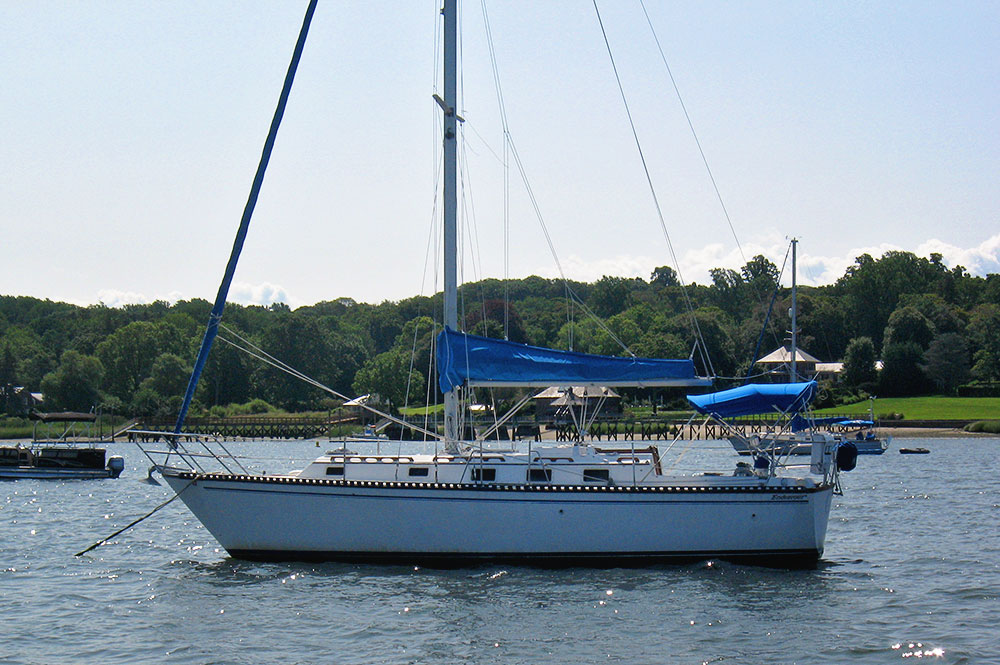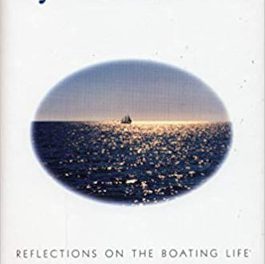
Armchair sailors and northerners who anticipate a winter lay-up take heart. While enjoying a cup of something hot, you can hear the percussive smack of wave on rock, see bananas in the rigging, and smell the fear of sailors caught by a murderous sea. As a fiendish wave overtakes Richard Maury on the 35-foot schooner, Cimba, ” The stern was sucked down . . . the bows fought as always they fought . . . her own buoyancy was all that could save the craft from being shattered, hove under.” Feel the poignant loss of Gordon Chaplin after a hurricane wrecks his anchored boat and he last sees his lover under water as she sinks away into the black.
In this twin anthology of excerpted chapters, the editor aims to whet the reader’s appetite for the lengthier works from which the chapters came. In the main he succeeds. Most, but not all, of the selections can stand alone as complete short stories. Because almost all the selections come from previously published works, well-read good old boaters will have some familiarity with them. Accounts by Chichchester, Rousmaniere, Dumas, Moitessier, the Smeetons, and the Pardeys appear. Obscure and out-of-print accounts by lucky fools and heroic madmen also appear. The editor sought to preserve neglected gems of sailing literature and rightly so. Wouldn’t a sailor wish to preserve a storied wooden schooner despite her advanced age and thereby make the world better?
Arranged in groups by topic, the stories touch on much of what draws us to sail with the wind upon the waters. The human drama, tragedy, singlehanding, racing, dangerous shores, and little boats all have sections in these books. A 6-foot, a 10-foot, and a 13.5-foot boat each makes it across the Atlantic. If you have to ask why, you wouldn’t understand; but it seems so unnecessary to start with such a craft. The reader can feel the slightly alarming intensity of Ellen MacArthur as she slaloms along at 20 knots in the Southern Ocean, self-driven to win an around-the-world race. The long-distance solo sailors (especially the British ones) seem just a little daffy. Bernard Moitessier proves the exception as he seems to grow saner and more self-aware as he sails. People die in these stories. The reader will come to know what all bluewater sailors dread or know or both: the monstrous consequences of a single wave.
The books have solid production values for paperbacks. The glue and covers look as if they will last on shore at least. The editor has included bibliographies and sources for readers inclined to get the rest of the story. Regrettably, he omitted any charts, authenticating photos or even sketch maps of the sailing grounds. The publisher plans additional volumes in this series and could correct this oversight. Readers may have to wait, however. Editor Tom Lochhaas plans a transatlantic crossing in Allegro, his 27-foot Albin Vega, which should provide salty grist for the literary mill.
Intrepid Voyagers: Stories of the World’s Most Adventurous Sailors Edited by Tom Lochhaas (International Marine, 2003; 378 pages)




